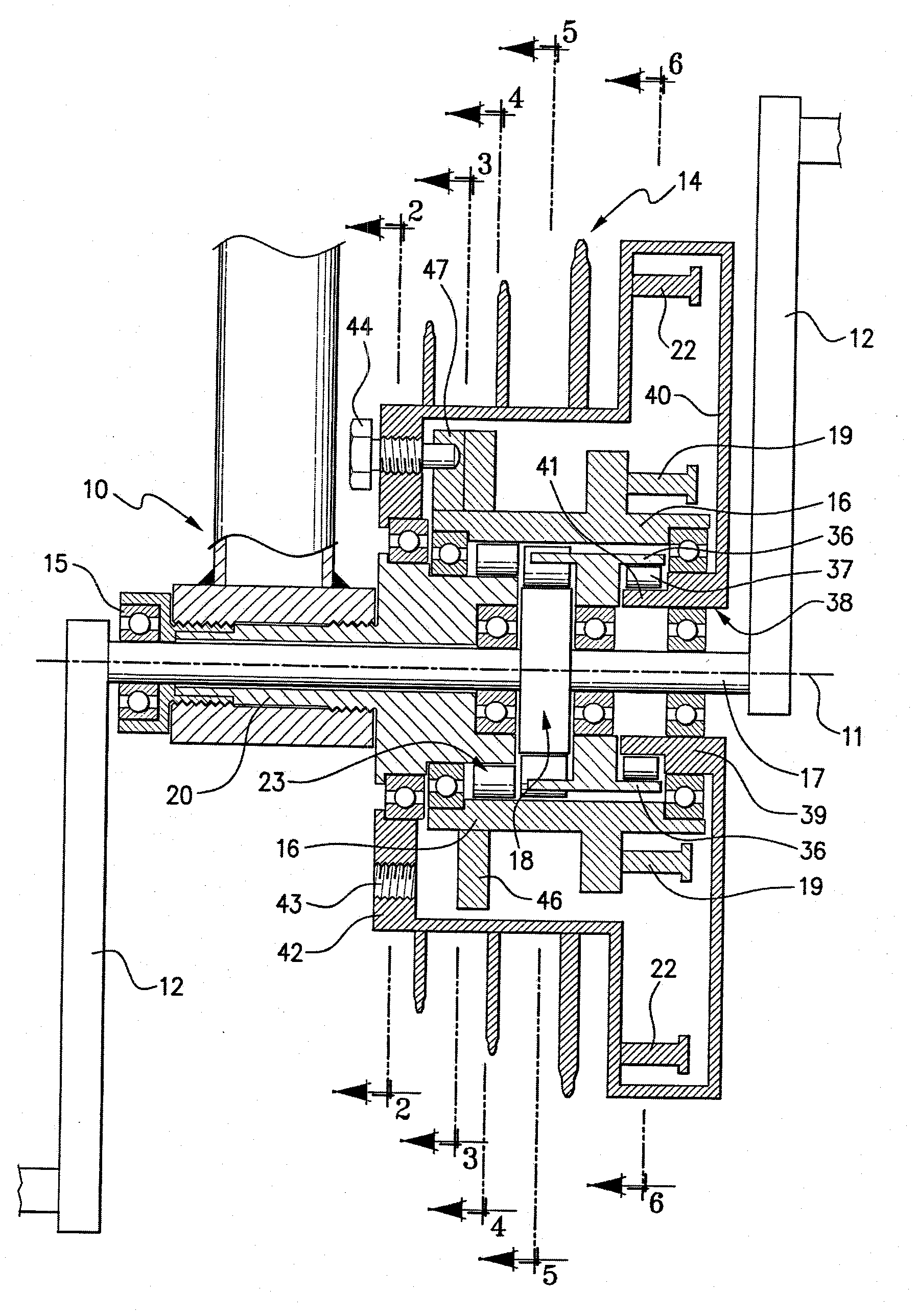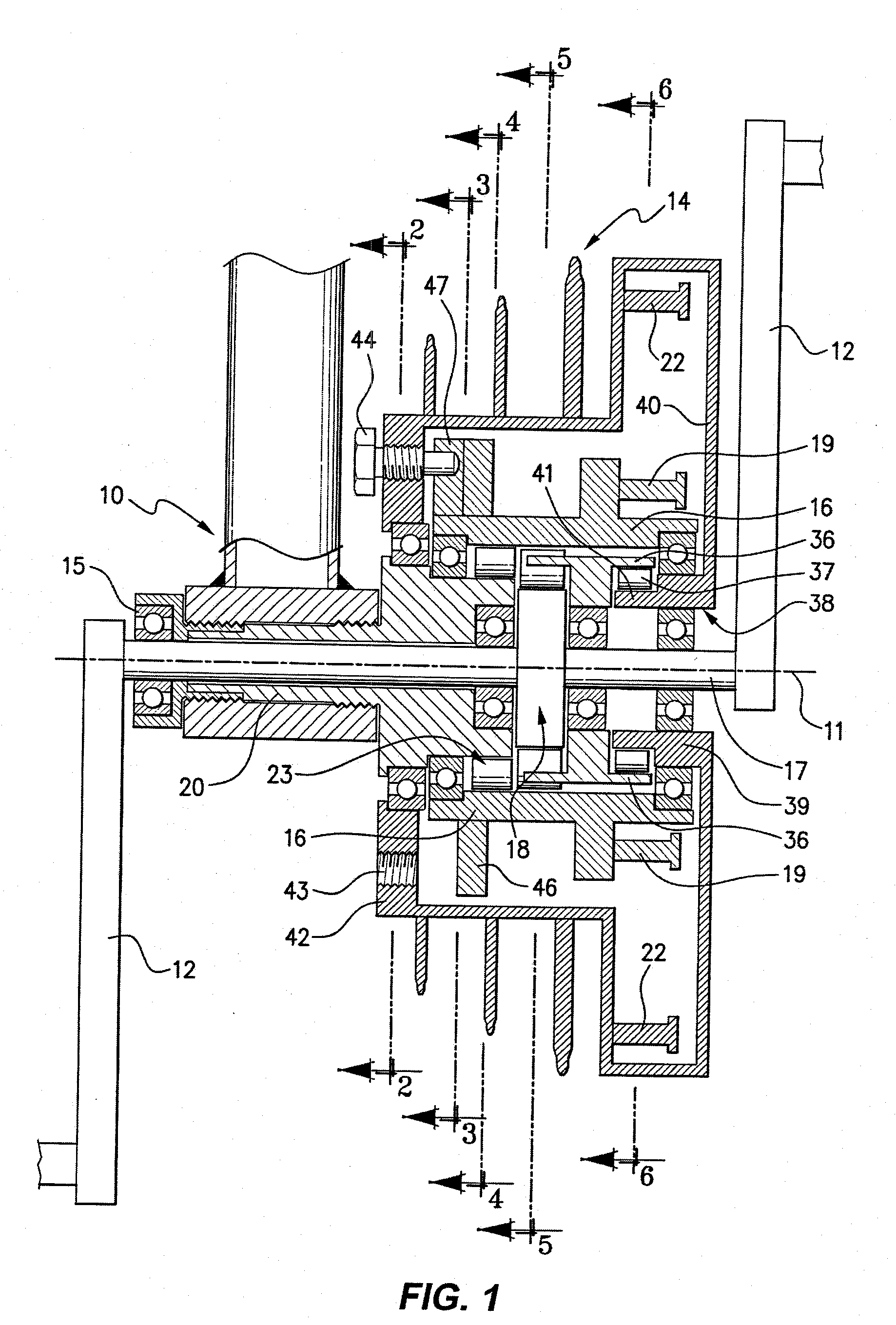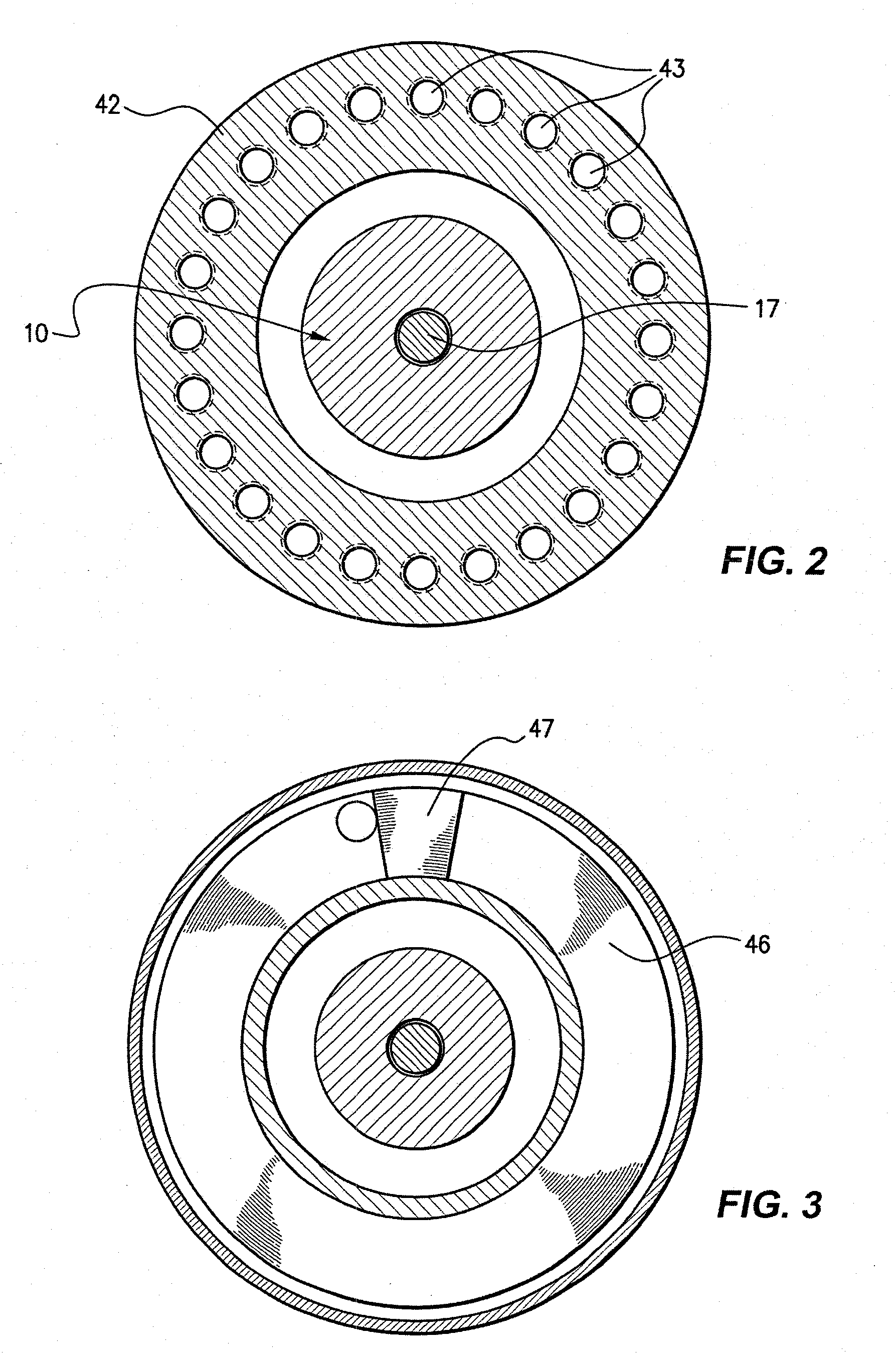Human Energy Transduction and Storage System Having a One-Way Clutch
a technology of energy transduction and storage system and clutch, which is applied in the field of system and making use of energy, can solve the problems of less efficient use of energy applied to the crank at the rotational position of the crank other than the three o'clock position to do work, and achieve the effects of maximizing power supply, less efficient doing work, and improving efficiency
- Summary
- Abstract
- Description
- Claims
- Application Information
AI Technical Summary
Benefits of technology
Problems solved by technology
Method used
Image
Examples
Embodiment Construction
[0079]Referring to the drawings, FIG. 1 shows a cross-section through the bottom bracket 10 and along the pedal axis 11 of one embodiment of a device designed for use with a bicycle. In this embodiment, the device is fitted as an intermediate mechanical component between pedal cranks 12 and the chain wheel assembly or sprocket 14 of the bicycle crank set.
[0080]The pedal shaft 17 connecting the pedal cranks 12 is mounted by bearings 15 to the bicycle bottom bracket 10.
[0081]The device includes a rotatable primary driving hub 16 mounted for rotation about the pedal axis 11. The hub 16 is adapted to receive the driving force or torque applied to the pedal cranks 12 through pedals (not shown). The hub 16 is driven through a releasable primary clutch 18 which engages between the pedal shaft 17 and the hub 16, as shown particularly in FIG. 5. Thus, when the pedal shaft 17 is rotated by the cranks 12, the rotational movement is directly transferred to the hub 16 through the primary clutch ...
PUM
 Login to View More
Login to View More Abstract
Description
Claims
Application Information
 Login to View More
Login to View More - R&D
- Intellectual Property
- Life Sciences
- Materials
- Tech Scout
- Unparalleled Data Quality
- Higher Quality Content
- 60% Fewer Hallucinations
Browse by: Latest US Patents, China's latest patents, Technical Efficacy Thesaurus, Application Domain, Technology Topic, Popular Technical Reports.
© 2025 PatSnap. All rights reserved.Legal|Privacy policy|Modern Slavery Act Transparency Statement|Sitemap|About US| Contact US: help@patsnap.com



